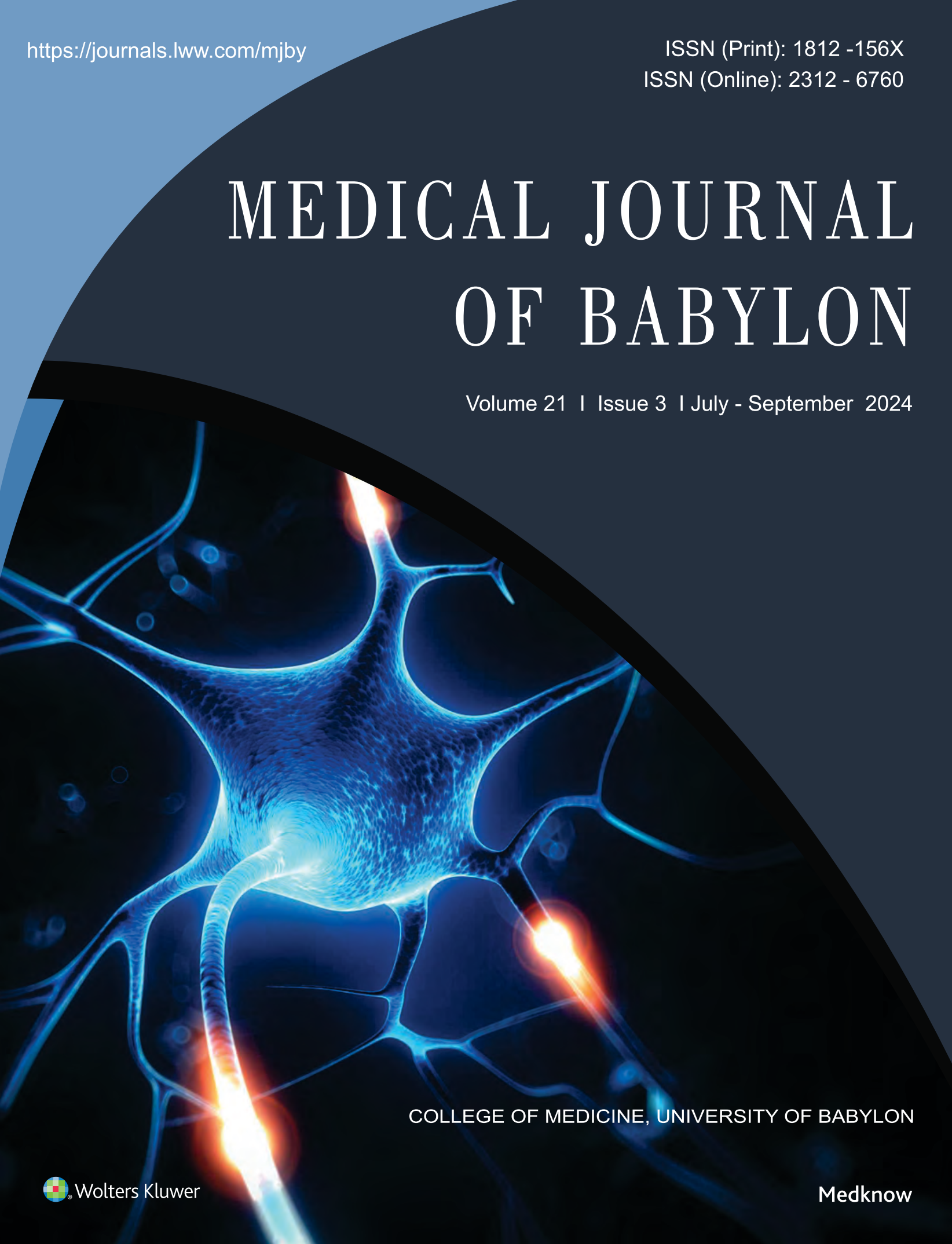Abstract
bstract Heparin is widely used antithrombotic agent for the treatment and prevention of thromboembolic
disorders in medical and surgical patients. One of the most important side effect is thrombocytopenia which may
lead to life threatening haemorrhagic and thrombotic complications. The condition is known as heparin induced
thrombocytopenia (HIT type 2). [1-3]
To determine the frequency, timing of HIT and its complications in the patients receiving unfractionated
heparin (UFH) .
The study done on the patients who were admitted to cardiac care unit in Merjan teaching hospital in
Babylon city, suffering from acute myocardial infarction( AMI) or unstable angina (UA).The patients received
UFH for a period varies between 5-10 days. The duration of the study was 6 months, from April 2004 to
September 2004.60 adult patients included in the study, with age varies between (28-84) years old. 40 patients
received intravenous heparin (IV) and 20 patients received subcutaneous heparin (SC).
We considered that normal platelets count is (150-450 x109/L) and thrombocytopenia type 2 with platelets count
less than 150 x109/L, or decrease in the platelets count to less than 50% from the baseline.
Baseline platelets count, haemoglobin, haematocrit, leucocytes count, activated partial thromboplastine time
(APTT) before commencement of heparin therapy.The diagnosis of HIT based on platelets counts (direct visual
method) and not on serological tests.
Mild thrombocytopenia (type 1) occurred in (12/40) in I.V route with a percentage of 30 % and in
(3/20)(15%) in S.C route heparin.
5% of patients who received SC and IV heparin developed Type 2 HIT. The platelets count ranging from (90
120 x109/L) in IV route and the platelets count was 60x 10 9/L in SC route.The onset of thrombocytopenia was
between the day 5to day 7.No clinical complications occurred in both routes. So HIT is a common complication
of heparin.
disorders in medical and surgical patients. One of the most important side effect is thrombocytopenia which may
lead to life threatening haemorrhagic and thrombotic complications. The condition is known as heparin induced
thrombocytopenia (HIT type 2). [1-3]
To determine the frequency, timing of HIT and its complications in the patients receiving unfractionated
heparin (UFH) .
The study done on the patients who were admitted to cardiac care unit in Merjan teaching hospital in
Babylon city, suffering from acute myocardial infarction( AMI) or unstable angina (UA).The patients received
UFH for a period varies between 5-10 days. The duration of the study was 6 months, from April 2004 to
September 2004.60 adult patients included in the study, with age varies between (28-84) years old. 40 patients
received intravenous heparin (IV) and 20 patients received subcutaneous heparin (SC).
We considered that normal platelets count is (150-450 x109/L) and thrombocytopenia type 2 with platelets count
less than 150 x109/L, or decrease in the platelets count to less than 50% from the baseline.
Baseline platelets count, haemoglobin, haematocrit, leucocytes count, activated partial thromboplastine time
(APTT) before commencement of heparin therapy.The diagnosis of HIT based on platelets counts (direct visual
method) and not on serological tests.
Mild thrombocytopenia (type 1) occurred in (12/40) in I.V route with a percentage of 30 % and in
(3/20)(15%) in S.C route heparin.
5% of patients who received SC and IV heparin developed Type 2 HIT. The platelets count ranging from (90
120 x109/L) in IV route and the platelets count was 60x 10 9/L in SC route.The onset of thrombocytopenia was
between the day 5to day 7.No clinical complications occurred in both routes. So HIT is a common complication
of heparin.
